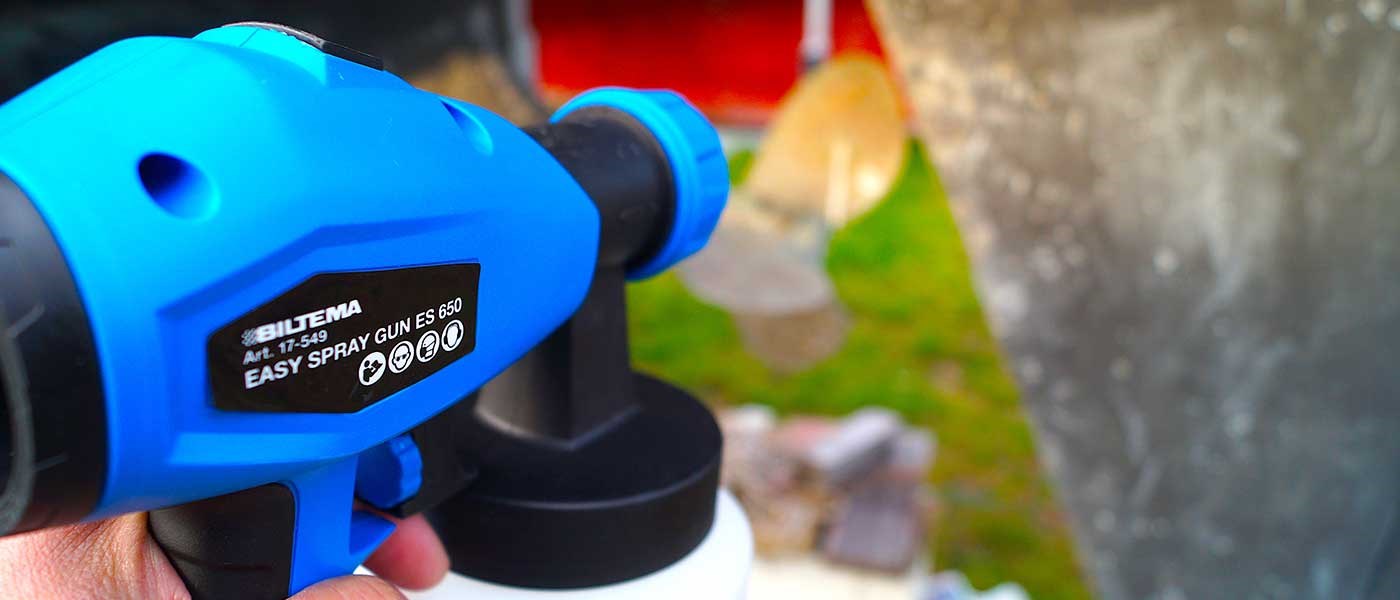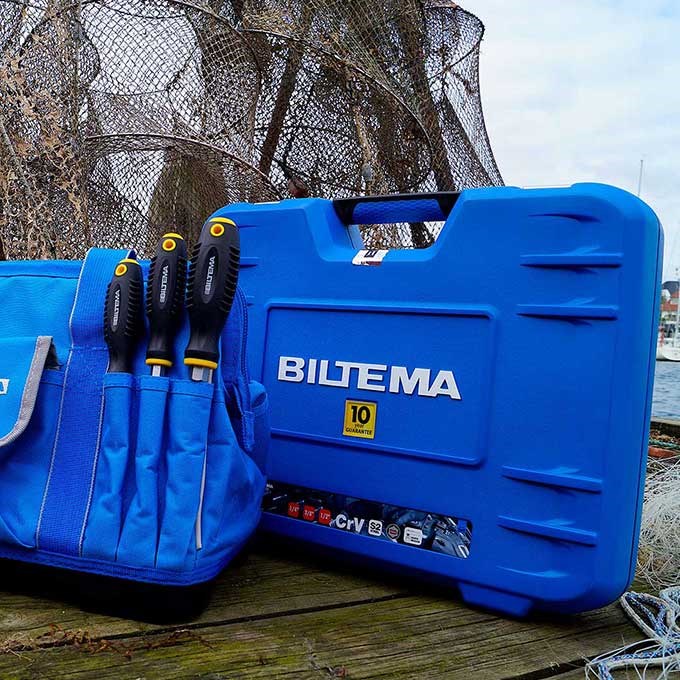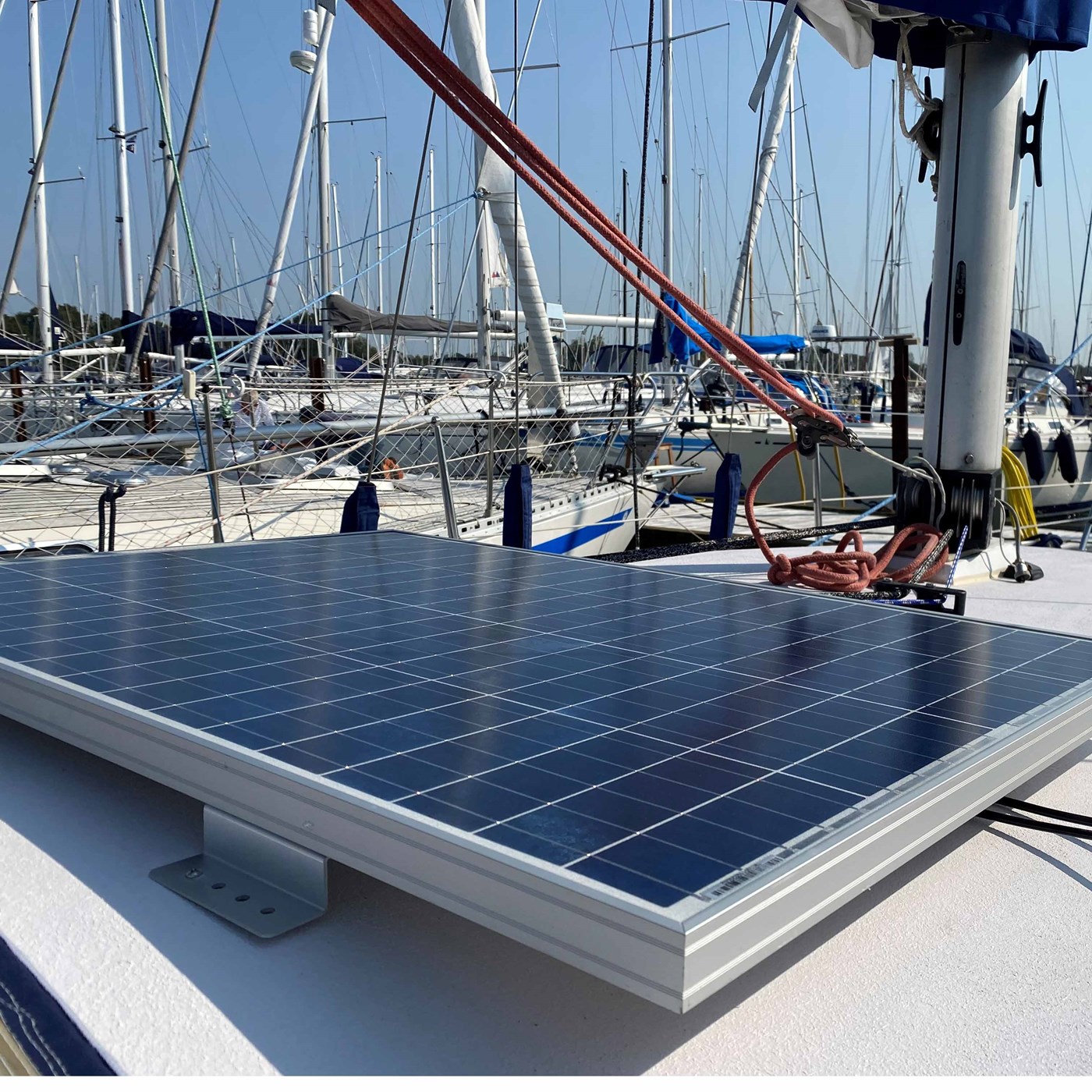Painting the boat
Epoxy primer (Primer) is a good primer for your painting project, both above and below the waterline. Epoxy primer is a primer that acts as a good intermediate coat and creates good adhesion between the surface coat and the topcoat that is applied afterwards. Our primer products also prevent fibreglass mould (osmosis) and can be used both above and below the waterline.
Create a good bottom layer
The biggest job is to create a good bottom layer – i.e. you need to fill, sand, and degrease the area to be painted to achieve a good finish and a surface to which your base paint adheres well. When it comes to filler, we recommend a water-resistant 2-component epoxy putty (can be used above and below the waterline), which is mixed in a 1:1 ratio. After that, the surface is matte sanded with sandpaper, and then cleaned with water and a suitable cleaner.
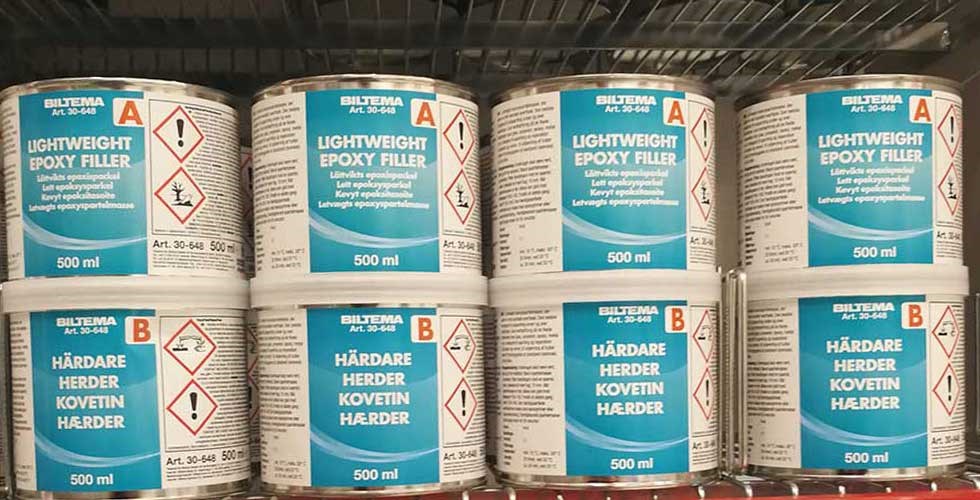
Epoxy putty is good for filling holes or irregularities and produces a smooth and dense surface prior to painting. Our epoxy putty has good adhesion on most materials, such as glass, polyester, epoxy, metal, etc.
Paint
In general, it can be said that there are two types of paint you can apply to your boat above the waterline, and they have different properties:
- 1-component alkyd paint + alkyd primer is used above the waterline and have medium durability. Alkyd paint is used on steel, wood and fibreglass and is especially good in places where there is a lot of movement or twisting in the area you are painting.
- 2-component polyurethane is also used above the waterline and has excellent durability with a hard surface and UV resistance. Polyurethane paint creates a durable, water-resistant surface with a high-gloss finish.
Good advice when painting your boat
Here are some tips you should follow when working with our boat painting products and paint in general:
- Use appropriate protective equipment when sanding.
- Do not eat or drink near the painting area.
- Wear nitrile gloves to prevent skin contact.
- Open the paint cans carefully, avoiding spillage.
- Read the labels – they contain important information about drying time and overcoating time.
- If you are unsure whether the paint you are applying will cover or match the existing paint, first apply some paint in a small area. It is always best to sand down existing paint if you want to ensure a perfect result.
- Remember that cleaning, sanding and priming are important steps in your painting project.
- Stir the paint thoroughly – even during the work – since it consists of many components that work best when mixed together.
Spray, brush or roller?
Read the label to determine how your paint can and should be applied. For example, our polyurethane paint cans clearly show which type of nozzle and working pressure to use if you are using a spray gun to apply the paint.
Spray painting generally creates the nicest finish, but the results will also be good with a roller and/or brush.
Spray painting is the method that requires the greatest skill to apply the paint correctly, and it is therefore a good idea to practice spraying on a piece of cardboard if you have not done it before. Spray painting produces a nice, smooth surface, but requires some practice to avoid streaking.
Regardless of the method, the paint must be applied in several thin coats to get the best results, which means it’s important to be patient and take your time. When applying several coats, allow the paint dry between coats, and sanding with suitable sandpaper between coats is recommended.
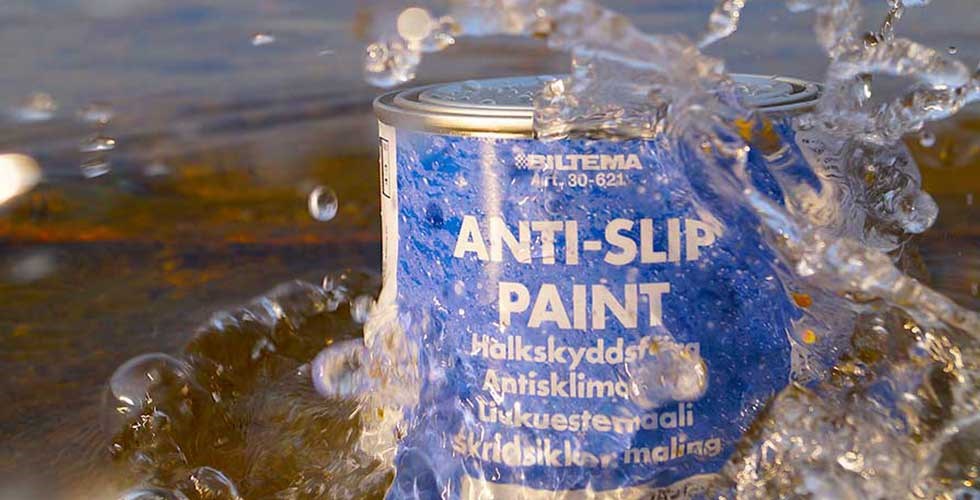
Anti-slip paint (non-slip paint)
There are many areas on boat where the surface should not be slippery. You can apply a special anti-slip paint to these areas to be able to walk safely on the deck.
Antifouling paint
There are many reasons why good antifouling paint is important for your boat. Together with the primer, antifouling paint prevents water from penetrating the surface of the hull, which in the worst case can cause fibreglass mould. The antifouling paints Biltema sells also make it difficult for algae and other organisms to attach to the hull. You can find more information about each antifouling paint on their product pages.
Which antifouling paint should I choose?
In Biltema’s range of popular antifouling paints, we offer both self-polishing biocidal antifouling paint and hard antifouling paint. The most common base paint is antifouling paint with biocides.
Keep in mind that the speed at which you drive your boat will affect your choice of antifouling paint. And if you only use your boat in fresh water, or is only in the water for short periods, you can use an antifouling that does not contain biocides. In some cases, it is not really a choice but a necessity.
We offer the following types of antifouling paints at Biltema:
Self-polishing antifouling paint, copper oxide-based with biocides – This is the most common biocidal antifouling paint. Water bubbles that form due to the speed of the boat cause the self-polishing antifouling paint to ablate. A self-polishing paint is ‘soft’ and ablates slightly every time you use the boat.
Hard antifouling paint without biocides – A hard antifouling paint suitable for fast motorboats. This type must be sanded before the boat bottom can be repainted.
You will find antifouling paints, thinners and paint strippers below.
Protect yourself and the environment when applying antifouling paint
Specialists recommend using a dust mask and safety goggles when sanding off the base paint and using a sander with suction to prevent contact with the paint dust. It is also important catch any spillage of antifouling paint by placing a tarp under the boat when painting, for example. When painting, you should wear gloves and a protective clothing.
There are rules and regulations regarding where antifouling paints can be used due to the active substances in biocidal antifouling paints. The two main rules are that biocides are prohibited when:
- The boat is operated in fresh water
- The boat weighs less than 200 kg (dinghies)
A good rule to follow is to always ask your port association about the applicable rules regarding antifouling paint, and to check the regulations.
Swedish Chemicals Agency: Anti-fouling paints
Biltema wishes you a wonderful boating season. See you in your local Biltema store!

